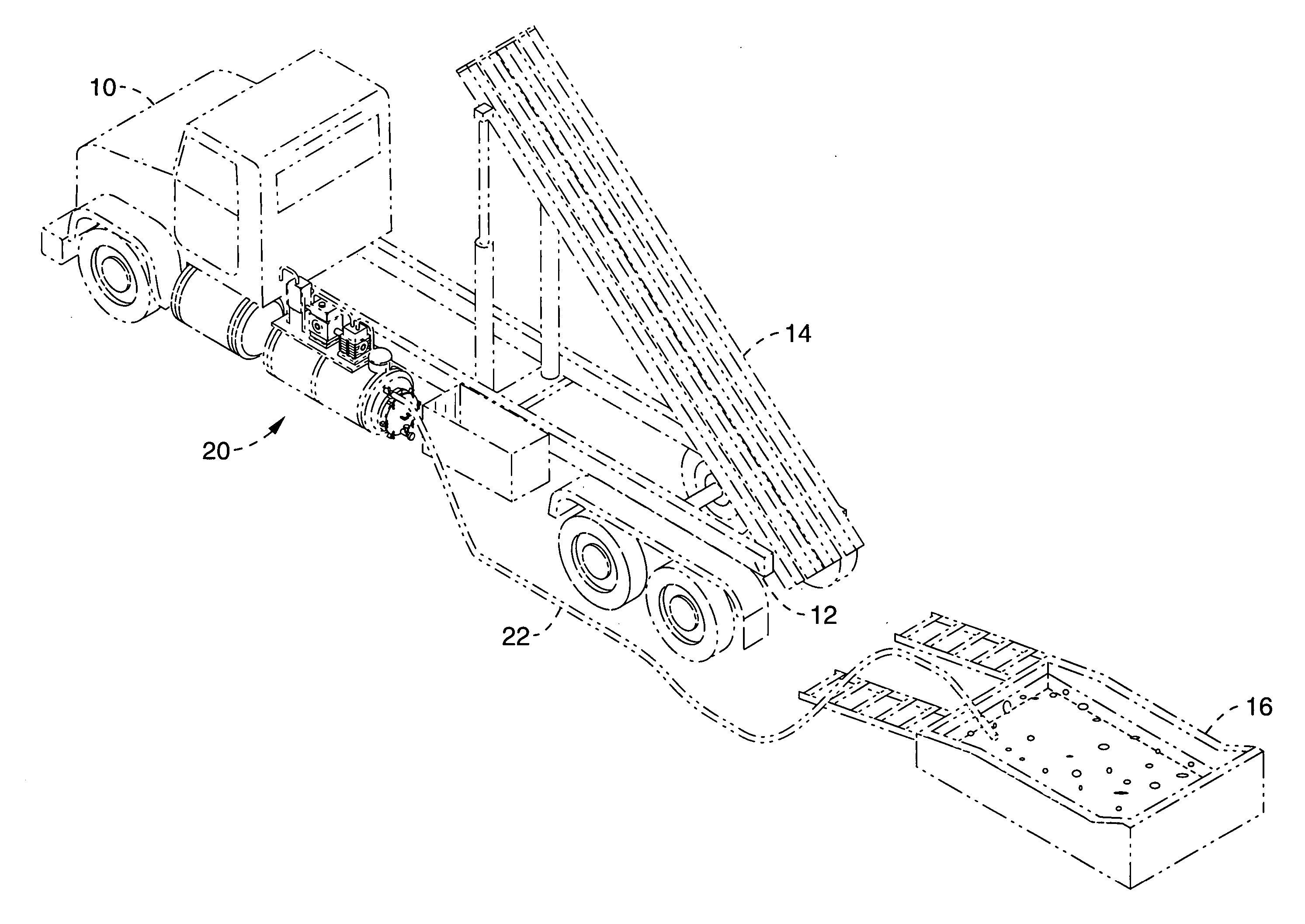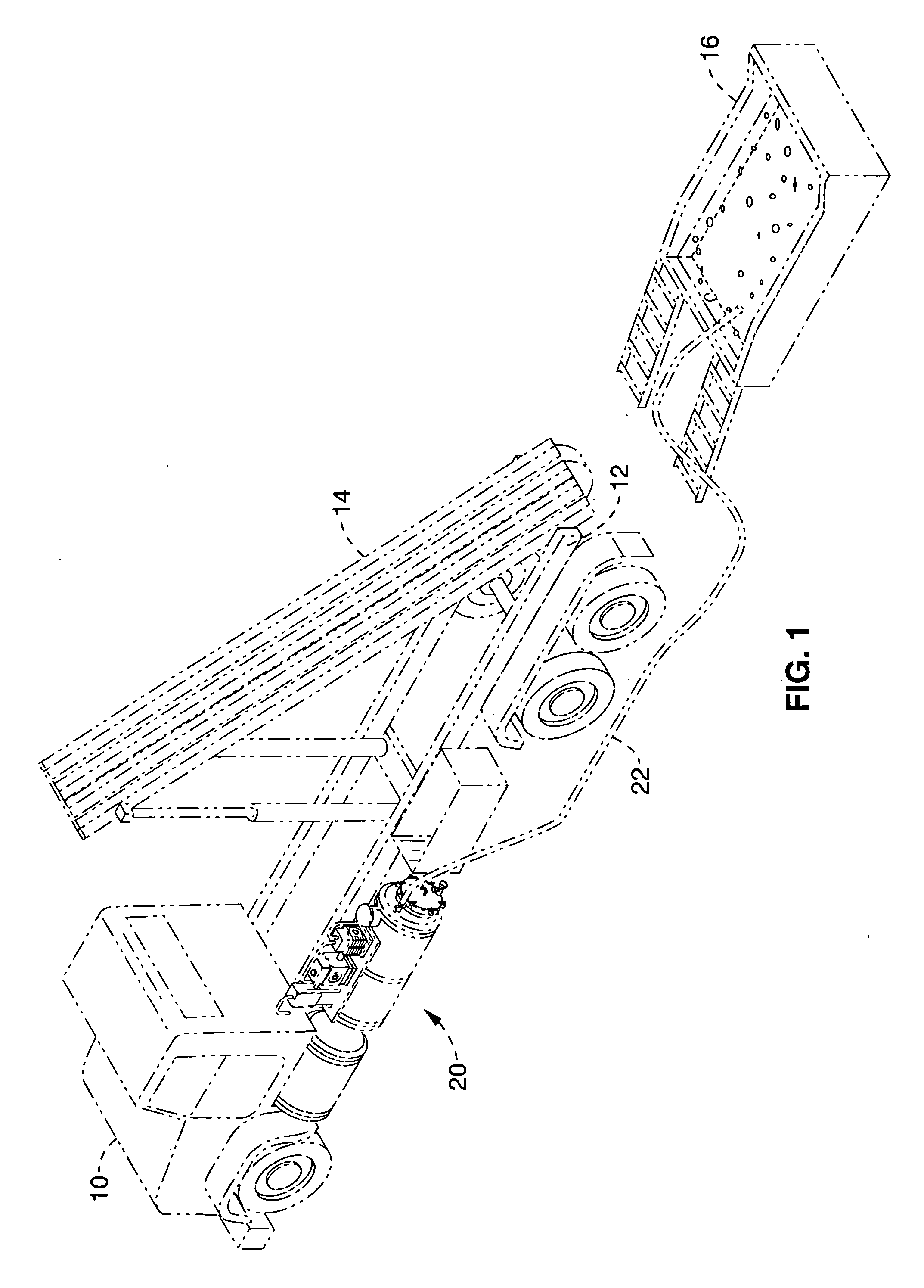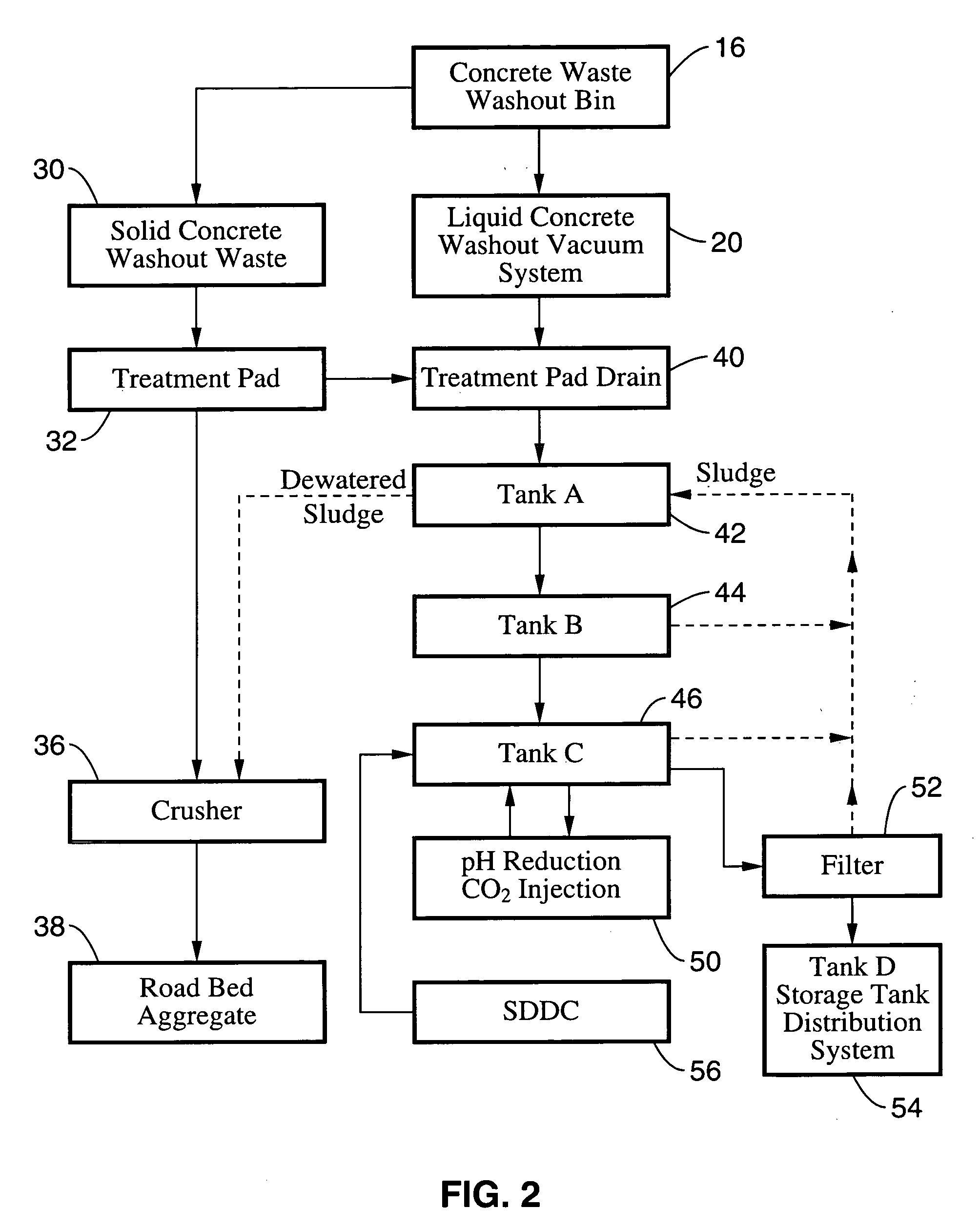Treatment system and method for liquid concrete washout waste
a technology of concrete washout and treatment system, which is applied in the direction of multi-stage water/sewage treatment, other chemical processes, separation processes, etc., can solve the problems of high ph and suspended solids of waste, difficult to remove solids and sediments, and easy leaking or flooding of sites
- Summary
- Abstract
- Description
- Claims
- Application Information
AI Technical Summary
Benefits of technology
Problems solved by technology
Method used
Image
Examples
Embodiment Construction
[0044] Referring more specifically to the drawings, for illustrative purposes the present invention is embodied in the apparatus generally shown in FIG. 1 through FIG. 3. It will be appreciated that the apparatus may vary as to configuration and as to details of the parts, and that the method may vary as to the specific steps and sequence, without departing from the basic concepts as disclosed herein.
[0045]FIG. 1 illustrates a transport vehicle 10 equipped with frame 12 and elevating slide rack 14 for handling skid loaded containers such as concrete washout bins 16. Concrete wash out bins are typically located at sites of concrete activity and are used by concrete mixer trucks to wash concrete solids from their equipment before returning to the batch plant.
[0046] A liquid concrete waste vacuum system 20 is mounted to truck 10 and consists of a tank and vacuum pump mounted to truck frame 12. Hose 22 is connected to waste vacuum system 20 and is used to access liquid in concrete was...
PUM
| Property | Measurement | Unit |
|---|---|---|
| pH | aaaaa | aaaaa |
| cementitious | aaaaa | aaaaa |
| time | aaaaa | aaaaa |
Abstract
Description
Claims
Application Information
 Login to View More
Login to View More - R&D
- Intellectual Property
- Life Sciences
- Materials
- Tech Scout
- Unparalleled Data Quality
- Higher Quality Content
- 60% Fewer Hallucinations
Browse by: Latest US Patents, China's latest patents, Technical Efficacy Thesaurus, Application Domain, Technology Topic, Popular Technical Reports.
© 2025 PatSnap. All rights reserved.Legal|Privacy policy|Modern Slavery Act Transparency Statement|Sitemap|About US| Contact US: help@patsnap.com



